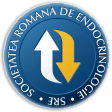
- Login
- Register
- Home/Current Issue
- About the journal
- Editorial board
- Online submission
- Instructions for authors
- Subscriptions
- Foundation Acta Endocrinologica
- Archive
- Contact
 Romanian Academy
Romanian Academy
 The Publishing House of the Romanian Academy
The Publishing House of the Romanian Academy

ACTA ENDOCRINOLOGICA (BUC)
The International Journal of Romanian Society of Endocrinology / Registered in 1938in Web of Science Master Journal List
Acta Endocrinologica(Bucharest) is live in PubMed Central
Journal Impact Factor - click here.

-
Endocrine Care
Stojanovic SS, Arsenijevic NA, Djukic A, Djukic S, Zivancevic Simonovic S, Jovanovic M, Pejnovic N, Nikolic V, Zivanovic S, Stefanovic M, Petrovic D
Adiponectin as a Potential Biomarker of Low Bone Mineral Density in Postmenopausal Women with Metabolic SyndromeActa Endo (Buc) 2018 14(2): 201-207 doi: 10.4183/aeb.2018.201
AbstractContext. Adiponectin is an abundant adipokine, which has antiinflammatory, anti-atherosclerotic and vasoprotective actions, and potential antiresorptive effects on bone metabolism. It seems to be directly involved in the improvement and control of energy homeostasis, protecting bone health and predicting osteoporotic fracture risk. Objective. To examine the relationship between adiponectin level and bone mineral density (BMD) in postmenopausal women with metabolic syndrome (MetS) and low BMD, and to estimate the prognostic significance of adiponectin in osteoporosis. Design. Clinical-laboratory cross-sectional study including 120 middle-aged and elder women (average 69.18±7.56 years). Subjects and Methods. The anthropometric parameters were measured for all examinees. Lumbar spine and hip BMD, as well as body fat percentage, were measured using a Hologic DEXA scanner. In all subjects serum adiponectin concentration was measured by ELISA method. Results. The level of adiponectin was significantly positively correlated with BMD-total, BMD of the lumbar spine and BMD of the femoral neck (r=0.618, r=0.521, r=0.567; p<0.01). Levels of adiponectin and BMD are significantly lower in post-menopausal women with MetS and osteoporosis compared to patients with osteopenia (856.87±453.43 vs. 1287.32±405.21 pg/mL, p<0.01; BMD, p<0.05), and the highest values in healthy examinees. A cutoff value of adiponectin level for osteoporosis/osteopenia was 1076.22/1392.74 pg/mL. Conclusions. Post-menopausal women with MetS have significantly lower adiponectin level and low BMD compared to healthy examinees. Adiponectin may be an early, significant and independent predictor of developing osteoporosis in women with MetS, especially in postmenopausal period. -
Endocrine Care
Bjekic-Macut J, Baltic T, Petrovic Nikolic T, Milanovic D, Brajkovic M, Brankovic M, Nikolic N, Klasnja S, Jovanovic M
Hemorrhagic Pheochromocytoma and Severe Carotid Stenosis: a Multidisciplinary Approach to Surgical PrioritizationActa Endo (Buc) 2024 20(4): 485-489 doi: 10.4183/aeb.2024.485
AbstractIntroduction. Pheochromocytomas are rare catecholamine-secreting tumors that may present with nonspecific symptoms or life-threatening crises. Spontaneous adrenal hemorrhage is a rare complication that complicates diagnosis, especially in patients with comorbidities. Case Report. A 68-year-old male presented with severe abdominal pain, a history of hypertensive crises, and episodes of syncope. Imaging revealed a retroperitoneal hematoma originating from the right adrenal gland. Biochemical evaluation confirmed pheochromocytoma, and further imaging showed 75% stenosis of the right internal carotid artery. A multidisciplinary team recommended right adrenalectomy prior to carotid intervention. After alphablockade with phenoxybenzamine, the patient underwent successful adrenalectomy and hematoma evacuation. Histopathology confirmed pheochromocytoma with hemorrhagic and degenerative features. Carotid artery stenting was performed postoperatively. Discussion. Hemorrhagic pheochromocytoma may mimic other acute abdominal or vascular conditions, especially in patients on anticoagulation. Noradrenergic pheochromocytomas are linked to a higher risk of atherosclerosis. In such complex scenarios, surgical sequencing must be individualized. Conclusion. In patients with hemorrhagic pheochromocytoma and significant vascular disease, early tumor resection followed by vascular intervention can reduce perioperative risks. A multidisciplinary approach is essential for optimal outcomes. -
Images in Endocrinology
Kavecan II, Obrenovic MR, Jovanovic - Privrodski JD, Redzek- Mudrinic TB, Konstantinidis NV, Vlaski JS
Glycogen Storage Disease Type 1B Associated with A Unilateral Hypoplastic Temporal LobeActa Endo (Buc) 2014 10(3): 530-531 doi: 10.4183/aeb.2014.530
Abstract-